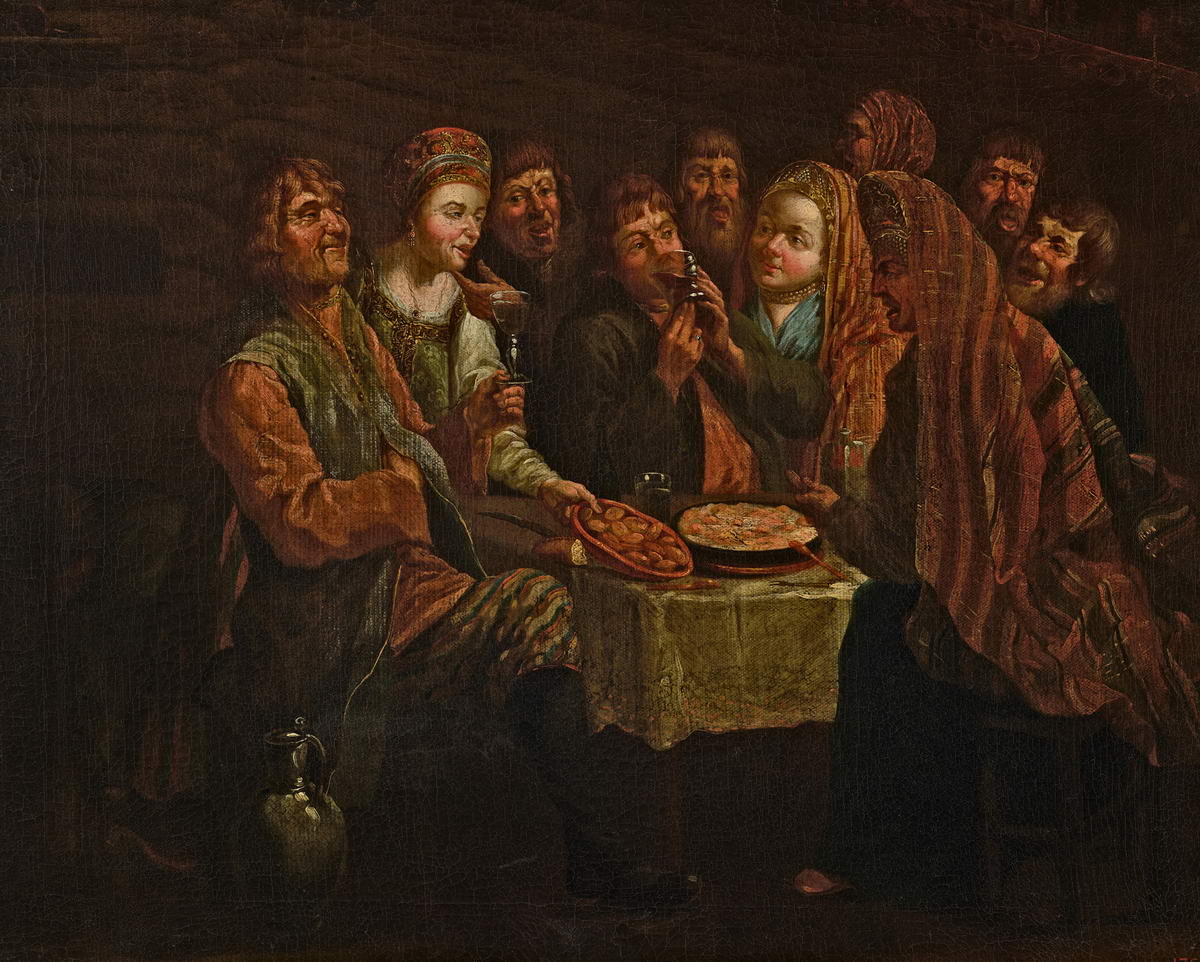


Картина Александра Вишнякова — одно из самых ранних изображений крестьянских трапез. Гротеск, свойственный всей сцене, подобен изображению грубой натуры, характерной для голландских и фламандских картин мастеров XVII века, которым подражали и русские художники середины XVIII века. Портретная галерея Русского музея. Лица России. СПб, 2012. С. 28.
Живописец. Жанрист.
Сын и ученик И. Я. Вишнякова. В 1760 и 1761 в возрасте девяти и десяти лет упоминался в исповедных росписях петербургской церкви Рождества Христова на Песках в Петербурге. Учился у И. И. Бельского.

The ball was not the only way of spending a noisy and boisterous evening in the nineteenth century. The alternative was a heavy drinking bout in the company of swashbuckling officers, idle playboys or just plain drunkards. While the ball was regarded as a decorous and high-class form of entertainment, wild revelry was perceived as a manifestation of "low taste". Although cultivated in certain army circles, it was only socially permitted in a young man in moderate doses. Play and Passion in Russian Fine Art. St-Petersburg. 1999. P. 130.
Peasant Carousal was painted at a time when Russian painters were first attempting to portray folk scenes. The peasants sitting at the table dressed in colourful Russian national costumes are closely observing and excitedly discussing the actions of the central characters a man and woman introducing an element of play to the atmosphere of the feast. Play and Passion in Russian Fine Art. St-Petersburg. 1999. P. 130.
Genre painter. Son and student of Ivan Vishnyakov. Mentioned as a boy aged nine and ten in the confessional inventories of the Church of the Nativity of Christ at Peski, St Petersburg (1760–1761). Studied under Ivan Belsky.



